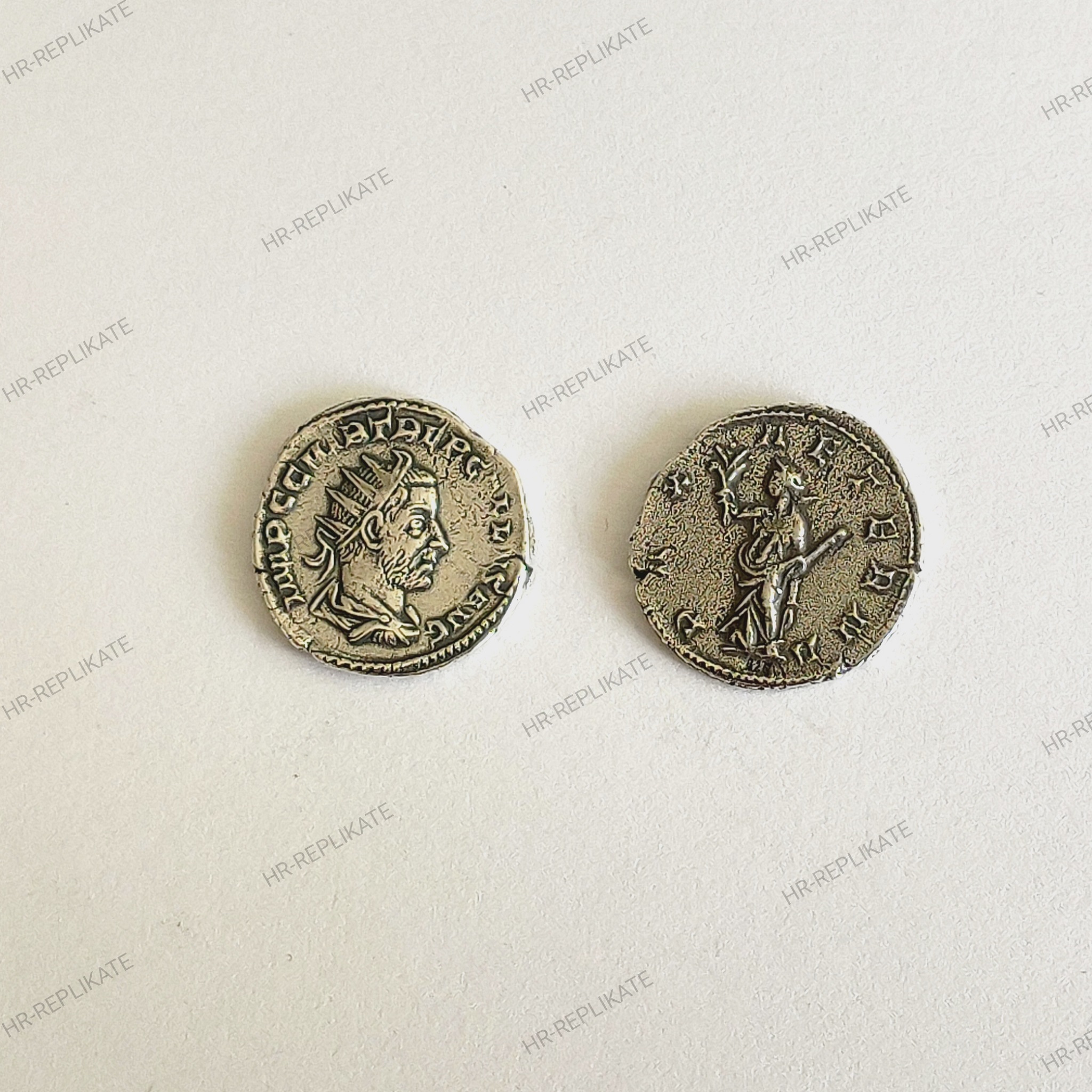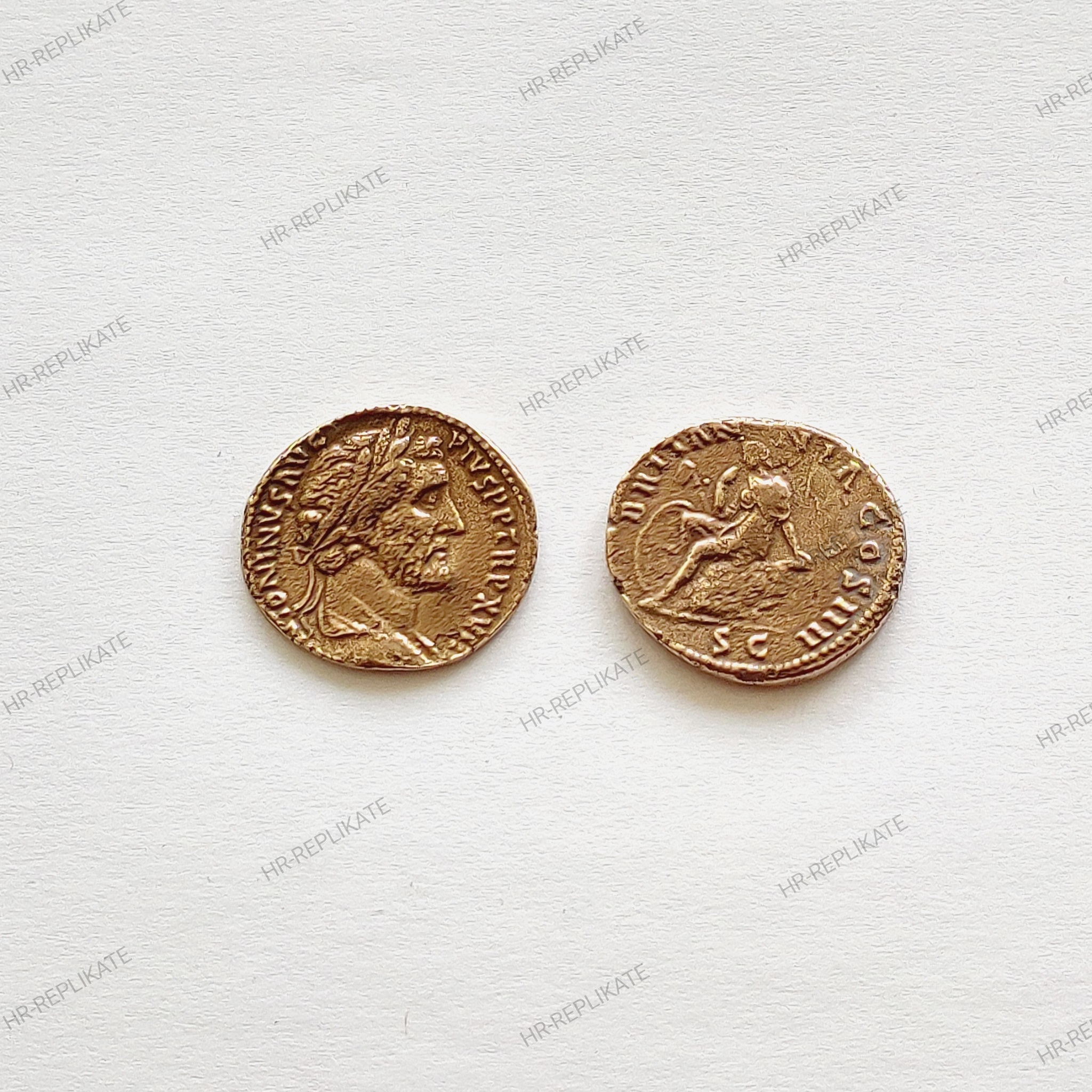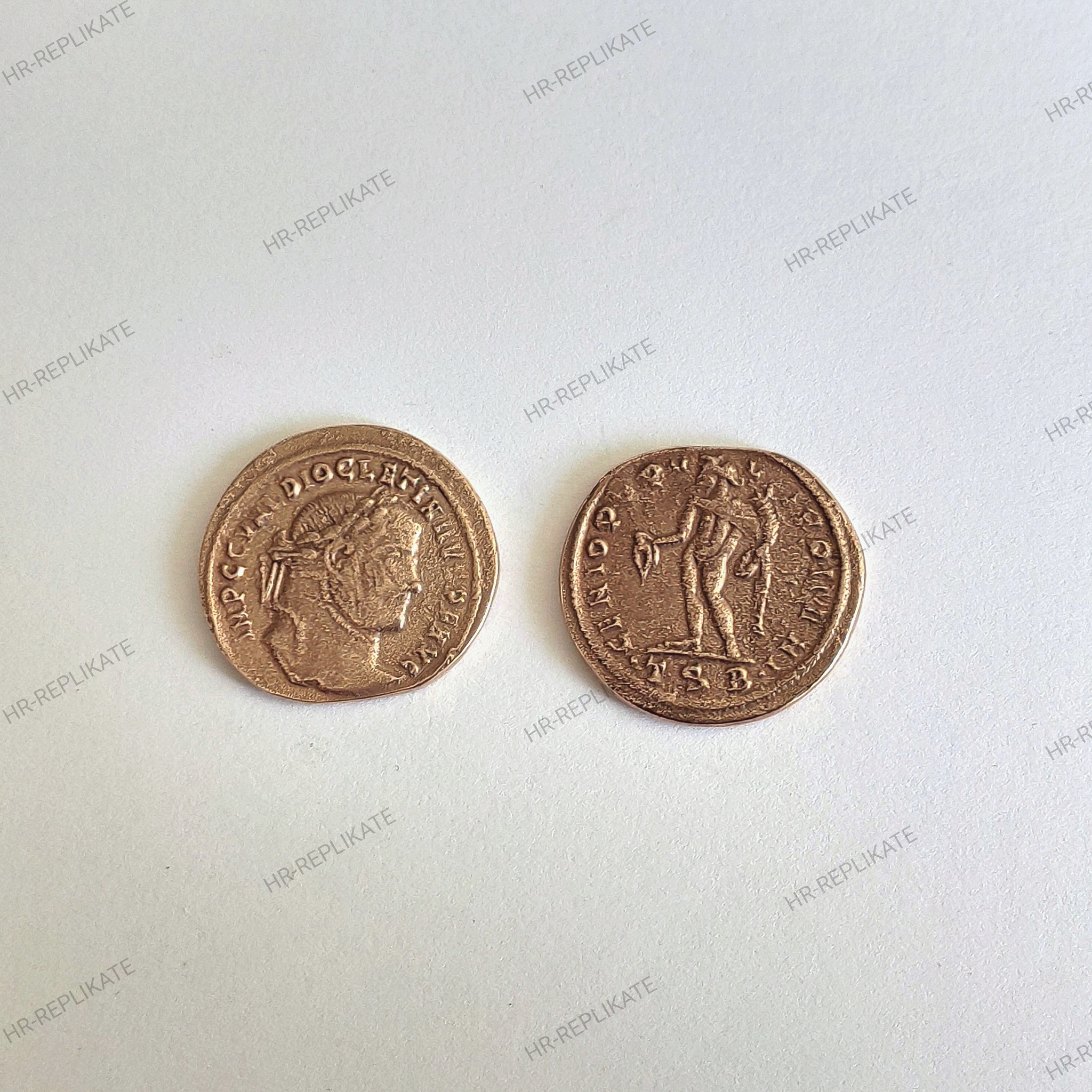Nummus of Diocletian (284- 305 AD)
9,00 €
Description
Obverse IMP(erator) C C VAL DIOCLETIANVS P F AVG Bust of Diocletian to the right with laurel wreath.
Reverse Genius Populi Romani stands to the left, with his right hand he pours liquid from a patera, in his left hand he holds a cornucopia. Around the edge GENIO POPULI ROMANI. Below TSB (abbreviated Mint, Thessalonica)
Nummus, bronze with very thin silver plating, diameter 28 mm, minted in Thessalonica (present-day Thessaloniki) 298-299 AD.
In 294 A.D., Diocletian carried out a monetary reform. The dominant main coin, the Antoninian, introduced by Caracalla in 214/15 AD, was originally a silver coin that became smaller and smaller over the decades and had almost completely lost its silver content. Diocletian replaced it with a large bronze coin about 28 mm in diameter, the nummus (also called “follis” in older literature), the surface of which was covered with a very thin layer of silver. The mint was now also noted on the coin in order to ensure uniform quality throughout the empire. But already at the time of Constantine the Great (325 to 337 AD) this was rearranged by another coinage reform: by smaller bronze coins without any silver content at all.
Additional information
| Material | Bronze |
|---|



